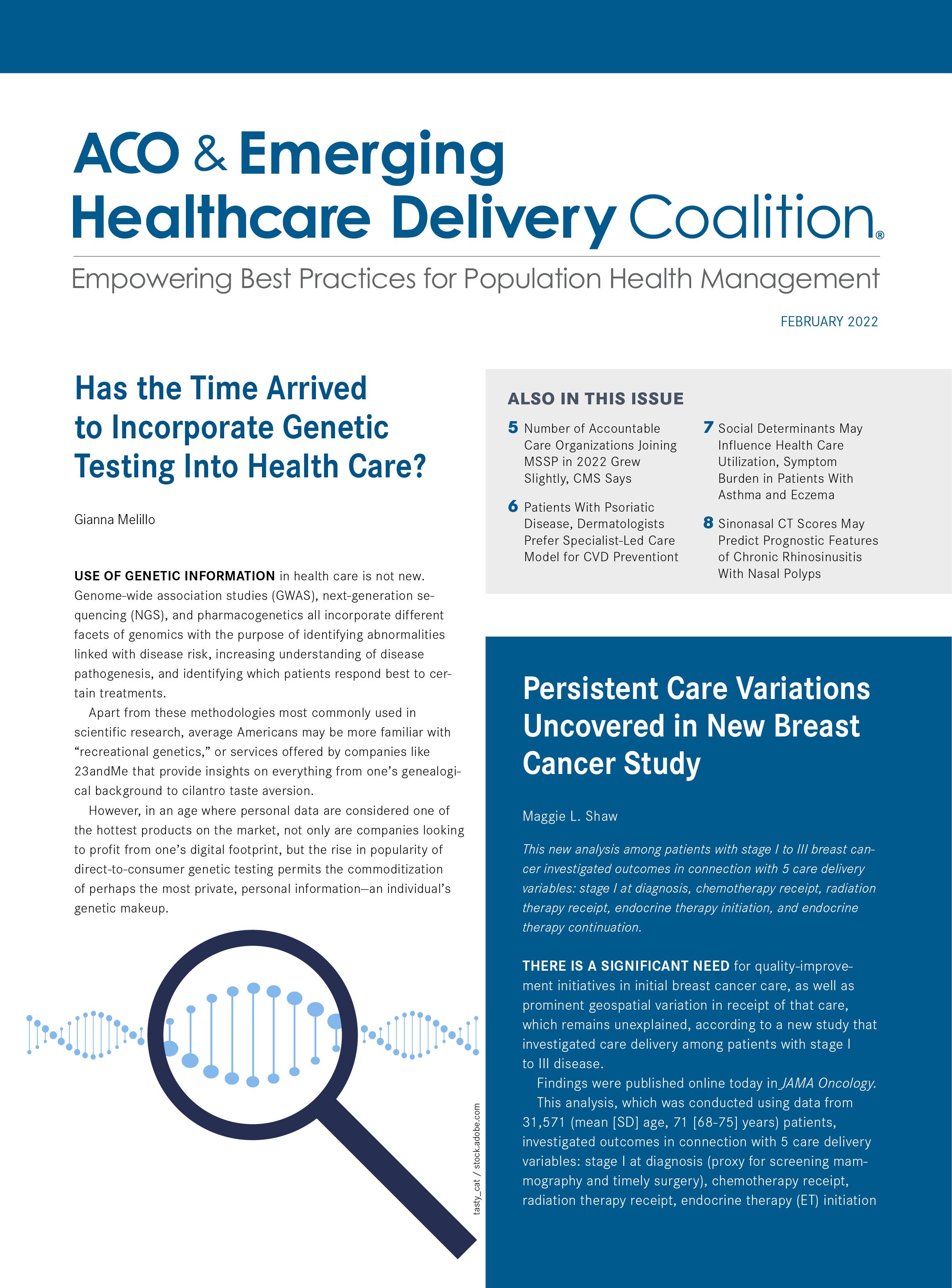- Center on Health Equity & Access
- Clinical
- Health Care Cost
- Health Care Delivery
- Insurance
- Policy
- Technology
- Value-Based Care
Persistent Care Variations Uncovered in New Breast Cancer Study
This new analysis among patients with stage I to III breast cancer investigated outcomes in connection with 5 care delivery variables: stage I at diagnosis, chemotherapy receipt, radiation therapy receipt, endocrine therapy initiation, and endocrine therapy continuation.
There is a significant need for quality-improvement initiatives in initial breast cancer care, as well as prominent geospatial variation in receipt of that care, which remains unexplained, according to a new study that investigated care delivery among patients with stage I to III disease.
Findings were published online today in JAMA Oncology.
This analysis, which was conducted using data from 31,571 (mean [SD] age, 71 [68-75] years) patients, investigated outcomes in connection with 5 care delivery variables: stage I at diagnosis (proxy for screening mammography and timely surgery), chemotherapy receipt, radiation therapy receipt, endocrine therapy (ET) initiation (within a year of diagnosis), and endocrine therapy continuation (3-5 years after diagnosis). The survey was conducted from January 1, 2007, through December 31, 2016, and data analyzed between January and June 2021.
“For each metric, total variance was attributed proportionally to 4 domains—random, patient factors (eg, age, race and ethnicity, socioeconomic status), region (health service area [HSA]), and unexplained—using hierarchical multivariable modeling,” the authors explained.
The retrospective population-based cohort study gleaned its data from the Surveillance, Epidemiology, and End Results–Medicare database for patients who received a diagnosis from 2007 through 2013, and the primary goal was to get a clear view of the extent of geospatial variation in breast cancer care.
Among the 5 metrics evaluated, patient factors likely had the least influence on variation in breast cancer care, at 1% to 4%, while region/HSA appeared to have the most influence, at 24% to 48%. In addition, for region/HSA variance, the blame may lie with ET initiation (28%) and ET continuation (39%). Most patients received radiation (81.6%), received chemotherapy (72.8%), initiated ET (48.8%), or continued ET (52.1%).
Still, 35% to 54% of care variation remained unexplained, the investigators highlighted.
Despite county-level data showing wide swings in breast cancer–related mortality—from 11.2 to 51.6 deaths per 100,000 women—and certain patient populations proving to be at higher risk of death from the disease—Black individuals, low-income people, older adults, and patients living in rural areas—the authors noted there is a lack of research on the impact of geographic factors on disease outcomes. Two important questions remain unanswered, they said:
- How much of the observed variability in breast cancer care can be attributed to patient factors vs region and how much is simply owing to randomness?
- To the extent that breast cancer care varies by region, which regions demonstrate the lowest performance?
In fact, in this study, most participants were non-Hispanic White vs Black (83.7% vs 6.1%), lived in an all-urban vs an all-rural area (60.2% vs 8.0%), were aged 70 to 74 years vs 75 to 79 years (39.3% vs 26.6%), and had no comorbidities vs having 2 or more (64.1% vs 13.4%). These numbers were seen despite fewer instances of stage I disease and receipt of treatment among patients of an older age, with multiple comorbidities, and who are Black. Especially among Black patients, ET use is much less, the authors noted.
In fact, "the ET metrics demonstrated the largest total observed variance, the lowest absolute performance, and the strongest association with region/HSA,” the authors concluded. “This is remarkable, considering that ET confers an impressive one-third reduction in the risk of death from breast cancer in the first 15 years after diagnosis.”
Next steps, they said, should focus on the portion of geospatial variation that remains unexplained, especially where doing so can help to optimize the delivery of ET.
Reference
Hassett MJ, Tramontano AC, Uno H, Ritzwoller DP, and Punglia RS. Geospatial disparities in the treatment of curable breast cancer across the US. JAMA Oncol. Published online January 27, 2022. doi:10.1001/jamaoncol.2021.7337

